Gas cylinder manufacturer, with extra than 30 years of producing history, has high safety and reliability. generally it is full of pressure. the products are argon, co2, natural fuel, liquefied petroleum fuel, acetylene, oxygen, that may meet the precise patron desires of various business, clinical and special gas programs. products are exported to the center East, Brazil, Argentina, Southeast Asia, Malaysia, South Africa and so forth. order: +86 15720773477
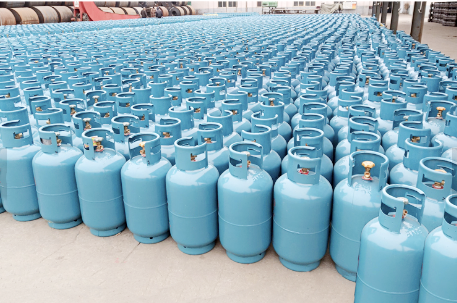
Are gas cylinders color coded?
- Carbon Dioxide gas cylinder colour code is: Green Grey
- Nitrogen gas cylinder colour code is: Pewter
- Argon gas cylinder colour code is: Peacock blue cylinder gas
- Helium gas cylinder colour code is: Brown
- LPG gas cylinder colour code is: Silver or Grey
- Acetylene gas cylinder colour code is: Claret
- Hydrogen gas cylinder colour code is: Signal Red
- Oxygen gas cylinder colour code is: Black
Your safety is our priority. That’s why all of our cylinder sizes, substances and valve sorts are decided through CGA, DOT and TC tips.in addition, the St Cloud college District is liable for the implementation, enforcement and updating of their Compressed gas Cylinder Plan. using our country of the artwork cylinder fill plant, we’ve an extensive line of scientific, commercial, forte, food and Cryogenic, gases for your commercial enterprise’s unique wishes.
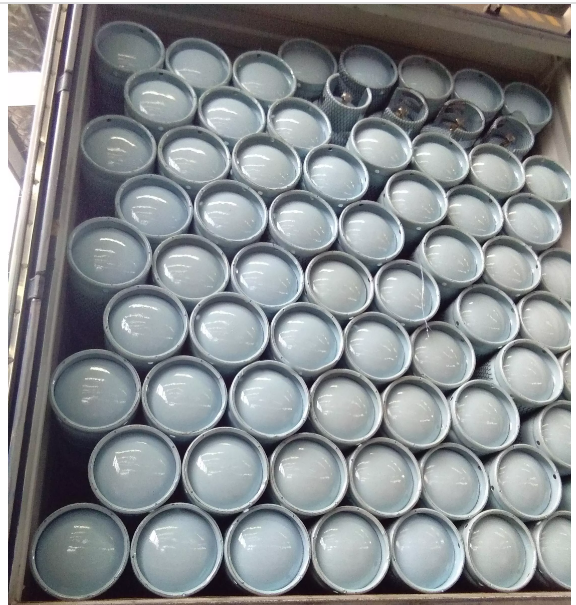
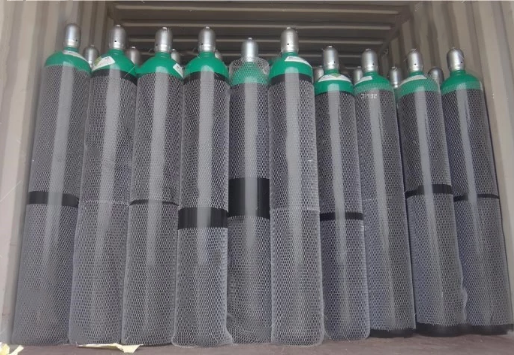
How much gas is in a cylinder?
Given a 19kg Liquid Petroleum Gas (LPG) cylinder, with this specification:
- LPG inside the cylinder weighs 19kg.
- The internal volume of the cylinder is 44.5 litres.
- The LPG is a mixture of propane gas (60%) and butane (40%).
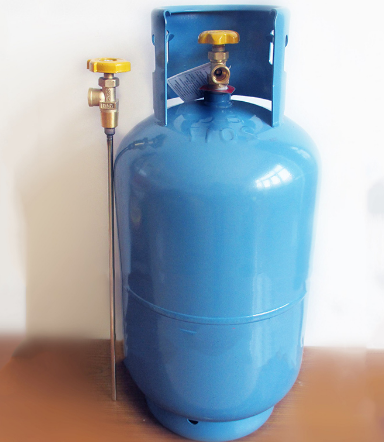
Why must full and empty gas cylinders be stored separately?
store cylinders in a dry, properly-ventilated place. location them in a area wherein they may no longer be challenge to mechanical or physical damage, warmness, or pneumatic electrical circuits to prevent viable explosion or fire.
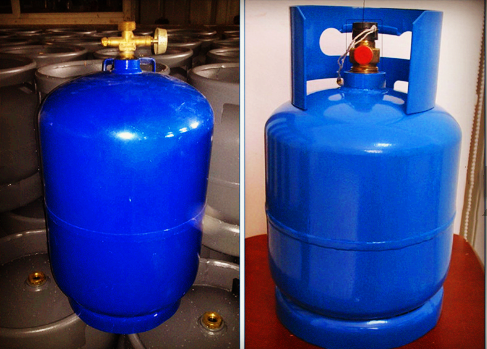
What is Gas cylinder?
A cylinder or tank is a pressure vessel used to store and contain gases above atmospheric cooking pressure. High pressure cylinders are also called bottles. Inside the cylinder, according to the physical characteristics of the contents, the contents can be stored in compressed gases, vapors in liquids, supercritical fluids or dissolved in matrix materials. Typical cylinder designs are slender, upright at flat bottom, with valves and accessories at the top for connecting to receiving devices.
Gas cylinder refers to a movable pressure vessel that can be re-inflated at normal ambient temperature (-40-60 C) and whose nominal working pressure is greater than or equal to 0.2 MPa (gauge pressure), and whose product of pressure and volume is greater than or equal to 1.0 MPa.L for gas, liquefied gas and liquid whose different types of pure gas cylinder malaysia gases standard boiling point is equal to or lower than 60 C. Gas cylinders cooking are widely used, whether in the production field or in the life field, almost all can not do without gas cylinders.
Gas cylinder is a kind of pressure equipment with explosive danger, and its loading medium is generally flammable, explosive, toxic, strong corrosion and other properties. The use environment is more complex and harsh than other pressure vessels because of its mobile, repeated filling, unstable Compressed natural gas kitchen operation and use of personnel and changing environment. Once the cylinder explodes or leaks, it often pneumatic causes fire or poisoning, even catastrophic accidents, resulting in serious property losses,stove home casualties and environmental pollution.
In order to ensure the safe use of cylinders, in addition to the general requirements of pressure vessels, Pressure vessels there are also some special requirements and requirements.
Must options to meet your needs
We offer many distinct kinds of natural gases and gas combos. relying for your fuel and application cooking desires, we are able to offer you with many different packaging alternatives:
- Steel and aluminum high-pressure cylinders
- Low-pressure gas cylinders
- Gas cylinder packs
- Piston cylinders
- big gas cylinder
What are the types of cylinders?
- Type 1 = Metal only. Mainly seamless forging metal. But for lower working cooking pressure, such as liquefied butane, there are also welded steel containers.
- Type 2 = Metal containers, rings wrapped in fibrous composites only around the cylindrical part of the “cylinder”. (Geometrically, compared with a cylindrical spherical cap, it is necessary to have twice the tensile strength in the cylindrical area.)
- Type 3 = Thin metal lining (which keeps the container tight but does not affect the working pressure) is completely wrapped with fibers in the matrix material.
- Type 4 = non-metallic lining made of plastic, completely wrapped in fibre material. The center of the cylinder head is still metal and includes the threads of the valve.
Classification
According to the manufacturing method
cylinders can be divided into the following four categories.
- Welded cylinders The welded cylinder is composed of a cylindrical cylinder rolled with thin steel plate and the heads at both ends. Welded gas cylinders are mostly used to hold low-pressure liquefied gases, such as liquefied sulfur dioxide.
- Control cylinders Tube cylinders are seamless cooking cylinders made of seamless steel tubes. The two ends of the head are formed by heating the steel tube on a special machine tool through spinning or extrusion.
- Punching and drawing cylinders It is heating the ingot, stamping the concave head first, then drawing it into an open cylinder blank, and then welding making the top small head and the interface pipe according to the method of controlling the cylinder.
- Winding cylinder
The cylinder is made of aluminium inner cylinder and alkali-free glass fibers with a certain thickness winded outside the inner cylinder. The function of the aluminium inner welding cylinder state of the art cylinder fill plant is to ensure the tightness of the cylinder. The compressive strength of the cylinder depends on the glass fibre shell wrapped around the outside of the inner co2 cylinder (epoxy phenolic resin is used as binder). Shell fibrous material is easy to “ageing”, so its service life is generally not as good as steel cylinders.
Classification by physical state of filling medium
Cylinders can be classified into three categories according to the physical state of the filling medium.
- Permanent gas cylinders A gas whose critical temperature is below – 10 C is called a permanent gas, and a cylinder containing a permanent gas is called a permanent gas cylinder. Such as cylinders domestic containing oxygen, nitrogen, air, carbon monoxide and inert gases. The common standard pressure series are 15 MPa, 20 MPa and 30 MPa.
- LPG cylinders Various gases whose critical temperature is equal to or higher than – 10 C are gaseous at normal temperature and pressure, and become liquid after pressurization and cooling. Among these gases, some have higher critical temperatures (higher than 70 C), such as hydrogen sulfide, ammonia, propane gas cylinder colour, liquefied petroleum gas, which are called high critical temperature liquefied gases, also known as low-pressure liquefied gases. The cylinders storing these gases are low pressure liquefied gas cylinders. typical gas cylinder design At ambient temperature, LPG is always in the state of gas-liquid two-phase coexistence, and its gas phase pressure is the small cylinder suppliers of medical gas vapor pressure of the gas at the corresponding temperature. The saturated vapor pressures of all liquefied gases at high critical temperatures are below 5 MPa considering the maximum domestic operating temperature of 60 C. Therefore, such gases can be filled in low pressure cylinders. The standard pressure series are 1.0 MPa, 1.6 MPa, 2.0 MPa, 3.0 MPa and 5.0 MPa.
- Dissolved gas cylinders This kind of cylinder is specially used for holding acetylene. Because acetylene gas is very unstable, especially under high pressure, it is easy to polymerize or decompose. A slight vibration of liquefied acetylene will cause explosion. Therefore, acetylene can not be filled in compressed gas. It must be dissolved in solvent (commonly used acetone) and filled with porous substances (such as calcium silicate porous substances) as absorbent. The maximum working pressure of dissolved gas cylinder is generally not more than 3.0 MPa, and its safety problems have particularity. For example, acetone ejection from acetylene cylinder will cause sizes acetylene cylinder with static electricity, which will cause combustion, explosion and increase acetone consumption.
Gas Cylinder safety and standards
The treatment of bottled gases is controlled because the contents are under pressure and sometimes harmful substances. Regulations may include linking bottles to prevent falling sizes and damaging valves, proper ventilation to prevent injury or death and marking in case of leakage, to indicate potential hazards if the compressed cylinder is overturned, resulting in valve blocks being cut, and rapid release of high-pressure gas may result in drastic acceleration of the cylinder, which may cause property damage, injury or death. To prevent this, the cylinder is usually fixed to a fixed object or transport vehicle with a belt or chain.
In a fire, the pressure in the cylinder is proportional to its temperature. If the internal pressure exceeds the mechanical limit of the Gas cylinder and there is no way to safely discharge the pressurized gas into the atmosphere, the container will fail mechanically. If the contents of the container are flammable, this event storage may lead to a “fireball”. Oxygen and oxygen oxidants have similar effects by accelerating combustion in the affected area. If the contents of the cylinder are liquid but turn into gas under environmental conditions, this is usually referred to as the Boiling Liquid Expansion Vapor Explosion (BLEVE).
Medical cylinders in Britain and other countries have a flammable Wood metal plug in the valve block between the seat and the cylinder. The plug melts at a relatively low temperature (70 degrees C) and allows the contents of the china cylinder to escape into the surrounding environment before the cylinder is significantly weakened by heat, thereby reducing the risk of explosion.
A more common pressure relief device is a simple blasting disc mounted in the base of the valve between the cylinder and the seat. Blasting disc is a small metal gasket designed to rupture under predetermined pressure. Some discs have low melting point metal on the back, so the valve stove must be exposed to overheating before the disc ruptures.
The Compressed Gas Association has published many pamphlets and brochures on safe operation and use of bottled gases.
Gas Cylinder storage
- The cylinder should always be properly fixed to prevent overturning, falling or rolling. They can be secured by bands or chains connected to wall brackets or other fixed surfaces, or by using cylindrical brackets.
- Cylinders should be stored in a cool, dry, well ventilated fireproof area in accordance with all applicable federal, state and local regulations.
- When the cylinder is empty or unused, make sure the valve is closed, the regulator is removed and the valve cover is fixed in place.
- Carriage cylinders designed for this purpose shall be used, and Gas cylinder shall not be tilted, dropped or rolled.
- When cranes, cranes or cranes are used to transport cylinders, appropriate lifting devices, such as brackets or nets, are required. Do not use magnets or slings to lift cooking cylinders. Do not use valve caps to lift cylinders.
- Precautions must be taken so that cylinders do not fall off or allow collisions or other objects. Dropping or impacting can damage cylinder valves, which can turn cylinders into dangerous torpedoes, which can damage property and/or injure people.
- For detailed information on the chemicals contained in cylinders, please refer to the corresponding Safety Data Sheet (SDS). Specific chemical treatment and storage precautions will be outlined in SDS. The safety data sheet will also develop appropriate personal protective equipment (PPE) specifications to protect workers.
- If your plant processes or stores acetylene, hydrogen, oxygen, nitrous oxide, liquefied petroleum gas or anhydrous ammonia, be sure to refer to the OSHA specific requirements highlighted earlier.
The valve cover should be in place whenever the cylinder moves. Cylinders should transported by a trolley designed to maintain safety, even if the Gas cylinder moved only a short distance. The new cylinder should fixed on the trolley with a belt or chain. People who move cylinders should wear all necessary safety clothing, such as but not limited to goggles or masks, gloves and safety shoes.
Special containers can used with forklift trucks to transport a large number of cylinders at the same time. Do not lift the cylinder through the cover, or try to drag or slide the cooking cylinder., cylinders should stored in a separate building that is open or provides good ventilation. Besides to providing large ventilation capacity, storage buildings or areas should be fire-resistant. dry, and away from heat or ignition sources. Electrical equipment in storage area should be well grounded. Cylinder storage area should be away from stairs, elevators or major traffic routes.
Outdoor storage sites should have appropriate drainage systems and should covered to protect cylinders from elements and direct sunlight. especially in warmer climates. All cylinders should stored at temperatures not exceeding 125 degrees F.Gas cylinders should also protected from extreme low temperatures (-20 degrees F), as many gas steels are steel that loses impact resistance at extreme low temperatures. The name of the stored gas should highlighted in the storage location.
Storage areas should be secure to prevent unauthorized personnel from destroying or tampering with them.Containers must stored by federal, state and new local regulations. Also, the recommendations of the National Fire Protection Association (NFPA) and CGA should followed. Many of these regulations deal with specific hazards of stored specific gases. Generally speaking, corrosive gases should not stored for a long time (more than six months).
Other gases, such as ethylborane, need to refrigerated to prevent gas degradation. Some flammable and toxic gases allow limited storage, especially when stored indoors. Storage cooking of some gases, such as hydrogen, requires special building structures with explosion-proof ventilation and explosion-proof wiring. According to the specifications, the storage of combustible gases requires non-combustible walls or partitions from floor to ceiling and sprinkler systems.
Stored cylinders should always fixed by linking them in place or placing them in separate units. The storage area must arranged so that the cylinders used in the order received from the supplier. Different gas groups should stored in different locations; for example, flammable gases should not stored near oxidized gases. Air cylinders should always stored from full cylinders to prevent accidental connection of air new cooking cylinders to the pressurization system, which may lead to serious suction.
Flammable materials should not stored in the same place as cylinders. The toxic gas storage area should have leakage detection and alarm system. Toxic gases may also must special ventilation and scrubbing systems to contain any leakage. Do not store toxic or corrosive gases that exceed immediate demand. Fire extinguishers, blindfolds, safety showers and gas masks should be near any place where gases stored or used. but they will not be new immediately contaminated if a gas leak occurs.
Storage of gas cylinders
Store cylinders on combustible materials at least 20 feet away from dry, ventilated areas. The oxygen cylinder is at least 20 feet from the gas cylinder. Make sure that the valve is fully closed and that all protective devices are secured. Avoid storing cylinders in lockers – leaks can cause dangerous gas build-up.
Our principle of safety first
Your safety is our top priority, which is why all cylinder sizes, materials and valve types are determined by CGA, DOT and TC guidelines. We use decades of industry experience to determine which gases can be safely contained and transported in which types of cylinders.
- In the past few years, several compressor cylinder accidents have occurred in the semiconductor industry, resulting in death. In one example, a cylinder repair company was new working on an arsenic container. When preparing to clean the cylinders considered empty, arsenic was released and an employee was killed. Many universities and companies still label cylinders with full or empty labels. “Empty” compressed cylinders are almost never empty and must be handled as if they were full and deserved due respect. “Use” better specifies cylinders that have been discontinued.
- In another incident, a silane cylinder detonated while two people from an analysis company were analyzing the contents of the cylinder. In this case, it is presumed that semiconductor manufacturers unintentionally contaminated silane with oxidants. Silane was originally used by Semiconductor Corporation (A), where possible contamination occurred. The cylinders are shipped back to the supplier and re-loaded and delivered to the manufacturer (B). It is not clear why the supplier did not completely empty or purify the cylinder. Manufacturer B is unable to make the Gas cylinder work in the process weight and return the cylinder to the supplier. The supplier transports the cylinders to the analytical laboratory for contamination analysis. The cylinder detonated in the laboratory killed two employees and demolished the building. This incident highlights a very common phenomenon: accidental cross-contamination of cylinders can be easily prevented.
- Compressed gases should not be transferred from one container to another, and all precautions should be taken to ensure that cylinders are not cross-contaminated. Do not rely new solely on check valves to prevent cross-contamination. Never sweep high pressure systems to lower pressure or house systems. Take all necessary precautions to ensure that incompatible gases do not mix. If you suspect that there are cross-contaminated cylinders, please inform the supplier immediately. All major compressed gas suppliers have emergency response personnel capable of handling cylinder emergencies. In fact, it is wise to assess and determine lpg supplier’s emergency response capability before purchasing. The supplier’s emergency response capability should be as important as process considerations.
- The technology of cylinder and cylinder valve is constantly changing. The supplier is not only filling the cylinder with semiconductor process gas in the clean room, but also checking for impurities and particles to ensure that its products meet the required specifications. Cylinder valve technology is becoming more and more complex. Nowadays, many suppliers provide cylinders with kitchen pneumatic control of closed cylinder valves. The normal closing valve can be opened remotely by pressurized gas, and the pressurized gas can be transported to the valve through a plastic pipeline. Pneumatic valves have the advantage of remote operation and can be connected to toxic gas monitors, power outage alarms, smoke and fire alarms or other safety systems to ensure that the weight Gas cylinder is closed in case of accidents or accidents. However, many closed valves have soft seats, which are easily deformed, especially due to overheating. Systems using these valves must be protected by sprinklers.
- Suppliers now also provide diameter indexing cylindrical connections with gaskets or face seal fillers to ensure system integrity when connecting process gases. Some of these china cylinder connections now have leak ports, so lpg Gas cylinder system integrity can be evaluated at CGA connections. Check the availability of these systems provided by the supplier. Most vendors will meet your specific requirements and provide security equipment as required.
Filling
The correct filling of cylinders is one of the keys to ensure the safe use of cylinders. Improper filling, such as gas mixing and excessive filling, is dangerous.
Gas mixing refers to the filling of two kinds of gases or liquefied gases in the same cylinder. The most common mixing phenomenon is the mixing of combustion aids such as oxygen and combustible gases.
For example, the original cylinders filled with combustible gases (such as hydrogen, methane, etc.) have not been replaced or cleaned, and there is still surplus gas in the bottle, which is used to fill oxygen. If these two media react under suitable conditions, it will cause serious explosion accidents. Therefore, gas mixing must not be allowed.
Overloading is also a common cause of lpg cylinder rupture and explosion. Overfilling cylinders are affected by ambient temperature. Especially in summer, liquefied gas in cylinders expands rapidly due to the volume of heating, which makes the pressure in cylinders increase sharply and causes cylinder rupture and explosion.
In order to prevent cylinders from overloading, the following aspects should be done well. The filling work should be carried out by a special person, who should receive regular safety education and assessment; the filling personnel should operate carefully and should not leave the post without authorization, while paying attention to the vacancy of liquid and checking the weight of bottles. The weighing apparatus used for liquefied gas filling shall be checked at least once every three months, and the maximum lpg weighing value of the weighing apparatus used shall be 1.5-3 times of the normal value. Make a careful record according to the bottle. The filling cylinder should be weighed repeatedly by a special person. If the device is equipped with automatic metering equipment, the excess can automatically alarm and cut off the valve.
Safe use
Prevent cylinder from heating. The cylinders in use should not be exposed to the sun, not close to the fire source and high temperature area, not less than 10 m away from the open fire, not to inject the cylinders directly with high pressure steam, not to thaw and bake in hot water, and strictly prohibit heating the cylinders with heat sources whose temperature exceeds 40 degrees Celsius.
Measures should be taken to prevent the cylinder from dumping when standing up; open the valve slowly to prevent the attachment from rising pressure quickly to produce high temperature; for flammable gas cylinders, do not knock the cylinder with steel tools to prevent sparks; for lpg oxygen cylinders, the cylinder valve and its accessories should not be greasy, and the oxygen cylinder should not be operated after the hands or gloves are greasy.
Gas cylinders should be used until the end of the remaining gas, mainly to prevent the mixing of other gases or impurities and cause accidents. When cylinders are used in situations where backflow (backfilling) may occur, there must be devices to prevent backfilling, such as one-way valves, check valves, buffer tanks, etc. Residual oil and gas in liquefied petroleum gas cylinders shall be recovered by installations with safety measures and shall not be disposed of by themselves.
Strengthen cylinder maintenance. The paint layer on the outer wall of the cylinder can not only prevent corrosion, but also be a sign of identification. It can prevent misuse and mixing. The integrity of the domestic paint surface and the clarity of the mark should be maintained. Mixing water into the cylinder will accelerate the corrosion of the inner wall of the cylinder. The cylinder must be dried before filling. The small cylinder user shall not change the type of gas filled or change the color mark of the cylinder without authorization. When replacement is really necessary, an application should be submitted, and the cylinder inspection unit shall be responsible for refitting the cylinder. The unit responsible for refitting determines whether the cylinder is suitable for the gas to be refitted according to the marking and small safety condition of the domestic cylinder. When refitting, the inside of the cylinder should be thoroughly cleaned, inspected, stamped and painted with inspection marks, the corresponding accessories should be replaced, and the words, color rings and colors of the refitted gas should be replaced.
Regular inspection
The inspection cycle for all kinds of cylinders is stipulated as follows.
- Gas cylinders containing corrosive gases are inspected once every two years.
- Gas cylinders filled with general gases are inspected once every three years.
- Liquefied petroleum gas cylinders are inspected once every 4 years for 15 years, and the last inspection is 3 years.
- Cylinders filled with inert gases are inspected once every five years.
- Inspection of cryogenic adiabatic cylinders once every 3 years.
- Vehicle LPG cylinders are inspected once every five years, and vehicle compressed natural gas cylinders are inspected once every three years. If serious corrosion, damage or doubts about the safety and reliability of automobile cylinders are found in the process of using when the automobile is scrapped, the inspection shall be carried out in advance. Cylinders that have been in stock and out of service for more than one inspection cycle shall be inspected before commissioning.
